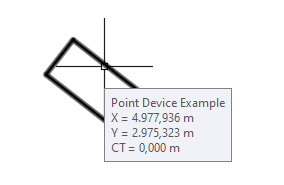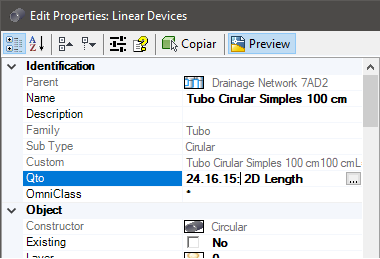Use nomenclature that identifies the element in the way you would normally show it on your service notes, for example: EDA - 01, PV - 25
Avoid names that are too long, or that contain the following characters: '*', '>', '<', '/', '\', '"', ':', ';', '|', '=', '`', '#', ',', '?'
Sometimes it is necessary to make some type of note on the device, informing something that does not have a specific property for such, for example: a wing may be silted and this information is relevant in the project
 Neutral - indicates that the device has no geometry or Design issues
Neutral - indicates that the device has no geometry or Design issues
 Warning - indicates that the device has Design problems, in this case, see the Calculations category
Warning - indicates that the device has Design problems, in this case, see the Calculations category Critical - indicates that the device has geometry or Design issues
Critical - indicates that the device has geometry or Design issues
Geometry problems are those that make it impossible to build the device, such as wall thickness equal to zero, pipe diameter equal to zero. These problems usually cause modeling error in the solid.
Critical Designing problems occur when the device has rules that, when evaluated, indicate critical problems, such as negative slope in the pipes, surface adjustment in culverts greater than zero (the top elevation is above the pavement)
This property is set in the device's builder
This property is configured in the device's builder
It is useful to inform the size of a device in a reduced form, for example: "Ala 600 mm", or "BDCC 2.00 m x 2.00 m", without having to write this information for these devices:

This property is configured in the device Constructor
To edit the QTO codes that the device updates, select the device and in the Properties tab click the button


Note that it is necessary to choose the QTO file that contains the activity codes. See more about this in the topic Service Compositions
If the device properties are identical to those present in your section, the OmniClass code will be the same.
If any property is different, a "*" appears in the code
If a code is assigned to the device that is present in the material list and the section has the same constructor, the device section will assume the properties of that section
A code to identify the builder. Typically used in network numbering in the global template.
For example, imagine that the structure name should be PV - A25. "PV" would be this code, "A" would be the network name and "25" the structure number.
In the example above, it would be the "25" in the structure name